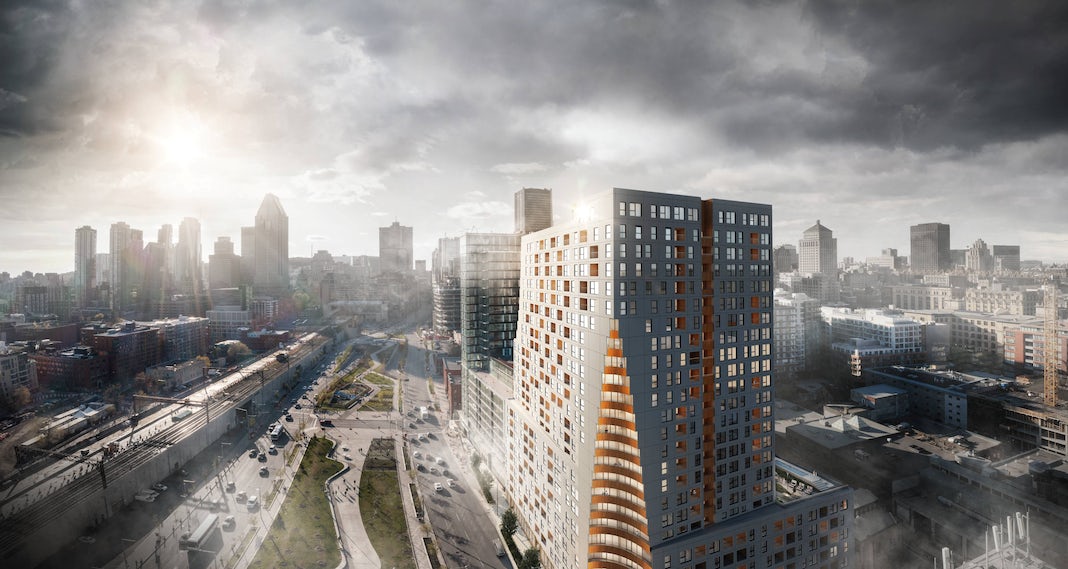Odea // Lemay
Text description provided by the architects.
Located at the gateway to downtown, Odea aims to highlight the presence of the Cree Nation in Montreal through a distinctive project, integrating their values and highlighting some of the characteristics of their culture. The architectural design creates a visual and urban link between the project and its environment. The conceptual approach reveals the unique character of the project while ensuring its urban integration.
A collaboration between Jean-Francois Gagnon, Project Design Principal, with the Indigenous emeritus architect Douglas Cardinal allowed for the exploration of the Cree community symbols and the integration of a strong cultural identity in the project’s architectural composition.

© Lemay
The design process is the result of a dynamic exchange that has created harmony and architectural coherence. According to Jean-François Gagnon, “the collaboration with Douglas Cardinal allowed us to capture the essence of the narrative surrounding the Cree culture, with simplicity, so that our proposal is based on staging architecture that is inspired by symbols and traditions that transform the landscape to respond to the rhythm of the city”.
By drawing inspiration from the shape of a canoe, the building acts a landmark in the urban landscape of downtown Montreal while animating the dynamics of the city entrance.

© Lemay
The name of the project, Odea, is inspired by the Cree word “ode” which means “canoe”.A design concept rooted in the figure of a treeThe forest and the tree were the primary resources that guided the thinking behind the project. In developing the concept, a sensitive approach was taken based on the matriarchal tradition of the Cree community.

© Lemay
The team constructed a narrative that evokes the passage of time using the analogy of the cross-section of a white birch trunk. In addition to being the emblematic species from the boreal forest, the figure of a tree also translates into the image of the bark (the building envelope) that protects the heart of the project (the interior courtyard) and the sapwood that constitutes the interior of the building.
In the same vein, the landscape architecture is strongly inspired by numerous elements specific to the Cree culture to testify to their presence in Montreal and to stamp the project with their signature.

© Lemay
The theme of the tree and the contrast between urbanity and the forest influenced the exterior landscape design, which evokes the different layers of the boreal forest:– The roots, the concentric aspect and the tender heart of the tree take the form of a shaded inner courtyard;– The branches spread out in the form of a vegetated terrace on the basilar;– The tops of the trees are reflected in the upper roof, where the sun dominates, and panoramic views of Montreal are offeredGiving meaning to the notion of territoryIn keeping with the Cree Nation’s principle of preserving the land, an important Net Positive™ component will promote environmental protection, carbon reduction, and user health and well-being throughout the project.This highly symbolic building includes office, commercial and residential spaces.

© Lemay
The construction includes a basilica, a 25-storey tower and an interior courtyard that will be accessible to the public. Two heritage buildings on the project site will be preserved and integrated into the construction.In addition to meeting urban integration challenges, the concept is the result of great cultural sensitivity and close collaboration between the team and the client.

© Lemay
The project gives meaning to the notion of territory by drawing inspiration from the evolution of Montreal’s urban fabric and reintroducing a vision rooted in a perpetual cultural identity..


